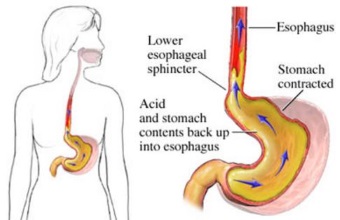Gastroesophageal reflux disease is a condition where a person is experiencing reflux of acid from stomach into mouth. The person will describe the symptom as heartburn on his chest. This can occur from time to time. It is usually worse after eating certain food or laying down flat. Acid in stomach can be corrosive to the inner esophageal linnings. Repeat reflux can cause inflammation and ulceration to the esophagus causing pain when swallowing (dysphagia).
Foods known to worsen reflux are chocholate, tea, coffee, spicy foods and fried foods. Some medications can also worsen the heartburn.
Longstanding untreated reflux can lead to changes to the inner lining of the esophagus which called Barrett's esophagus. Barrett's esophagus means the lining of esophageal changes from squamous cells to intestinal metaplasia which allows the esophagus to withstand the corrosive effect of the acid. However, Barrett's esophagus can increase the risk of esophageal cancer (adenocarcinoma). To investigate for the changes, gastroscopy (fibre optic camera) to look into the esophagus and biopsy of esophagus to be taken and send to pathology. The pathologist will identify the cells in biopsy to see any changes to the cells.
Treatment of GORD will usually be medications such as Proton Pump inhibitor or Histamine 2 blockers. I prefer using Proton Pump inhibitor (Nexium) as it can reduce acid secretion in stomach by 90%. Whereas Histamine 2 blocker (Zantac), it can reduce acid secretion in stomach by 60% only. Nexium is a slow release and can last up to 19 hours.
In patients who have severe GORD despite on maximal medical terapy, surgery can be considered to solve the problem. Surgery like Nissen fundoplication which can be done through laparoscopic (keyhole) surgery.
